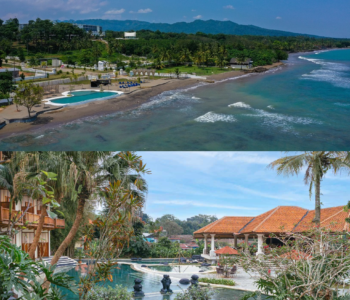
This article is based on an excellent presentation made by John Sommer, Director of Strategy and Business Development at MT Højgaard, the MVB Buildings and Circular Economy Seminar in 2019, which highlighted the case for a radical change in the way we approach the concept of building. The information has been edited and reorganised by Alistair Speirs but the essential points and facts remain those made by John in his presentation and are his property. He is the Co-author of Building a Circular Future.
Why should we even bother focusing on sustainable and circular construction? Well despite all the negativity, the world has become a richer place over the last 50 years, and that puts a lot of pressure on resources. (The number of people at ‘level 4’ SES will increase from 800 million today to 1,700 million in 2040). In fact, in 2015, the world used 1.5 times its capacity, meaning there was a net depletion of resources that year, and the same will have happened every year since. When you combine that with the fact that about 30pct of waste comes from the building industry, we have a problem. Especially when the demand for new buildings in the new economies (and many of the old) is rising but with no increase in sustainable resources and raw materials.
That is why we have to refocus on actual sustainable construction methods and find a way to integrate buildings into their own circular economy. We have to face and understand the technological challenges and the opportunities that they bring. From 1980 to 2010, the focus was on energy reduction, but nowadays that’s a given for new builds, with allowed energy consumption according to the building codes reducing dramatically from index 200 in 1995 to just 20 in 2020. Evidently, there is real progress there.
In fact, globally and in Denmark especially, sustainability is becoming the norm. In 2010, the meeting at the National Association for Building in Copenhagen and in several subsequent meetings, the Danish Sustainability Standard were set including standards for offices, hospitals and so on. In 2018, there were more than 300 members from all over the industry following this standard. Pension Foundations such as Pension Danmark and ATP that required that all of their new builds to be DGNB Gold Certified, and by 8 May 2019 the number of countries that are members of World Green Building Council rose to 98.
The main sustainability systems in the construction industry in Northern Europe and the USA are LEED, BREAM and DGNB Denmark.

Now the focus is shifting to functionality and the impact of buildings and communities on us human beings. As Winston Churchill once said, “First, we shape our buildings, thereafter they shape us.” Here are some basic facts:
- If you increase access to real outside views, people function 10 – 25pct better, they can answer calls 6 – 12pct faster, it reduces hospital stays by 8.5pct
- With more natural daylight, students increase test scores by 5 – 15pct, workers are 18pct more productive, retail sales increase by up to 40pct
- And with better air conditioning, productivity increases by 11pct. Why would we not focus our designs to make all these increases happen every time we build?
Of course, in parallel, we need to reduce the use of resources in general, hence the need for a circular economic approach, whereby we move from “take-make-waste“ to a circular system where the technical resources directly interact with the natural resources in a closed loop.
But the first challenge in establishing this is how to “design for disassembly“ i.e. actually making buildings that can be “deconstructed“, taken apart and the parts reused, repurposed or recycled elsewhere! This takes inspiration from many other industries where the components are reusable and easily replaced like the electronics industry or a highly sophisticated but interchangeable Formula One car!
The building industry has many precedents in this thinking including traditional carpentry and the amazing post WWII pre-fabrication boom. But the main challenge when the scale is increased to commercial building size, is the joints, which have had to be rethought and re-engineered to use nuts and bolts, lime mortar, instead of permanent fastenings, but still be strong enough. This has led to development of common use fasteners, and dissolvable binders, among many innovations. What they are trying to achieve is to be able to reverse the building process!
This led the designers on to creating a system called Material Passport whereby each component is documented, identified, maintained throughout its life, checked for safety, and therefore can be ready for reuse or repurposing when and if required. The architects and engineers know exactly where and what each component is, and does and where it is and how it can be released.

The business case for this type of system—over and above the environmental case—is compelling. In the case study presented by John in the seminar, he noted that a particular building under normal construction standards would have a demolition COST of DMK 16 million but a deconstructable build will have a VALUE of DMK 35 million. Another reason to look very carefully at what we are doing and change. In fact, at the 79th Euroconstruct meeting they estimated the economic value of reusing building elements in the EU at a staggering EUR 13 billion.
In conclusion, changing to these business practices has immediate short-term gains: improved flexibility, faster construction and optimised operation. And leads to increased economic value as well. But there are challenges: Building Laws and Building Codes need to change, construction laws need altered, and there has to be compliance with Waste and Environment laws, which should benefit the new ways and penalise the old, to try to accelerate change.
But the ideas are there, the concepts are proven, there are many buildings already made to these standards. It is now time to bring them into Indonesia and change our wasteful ways for the better.
John Sommer is the Director of Strategy & Business Development at MT Højgaard CBS-SIMI and Executive MBA, B.Sc. Civil Eng., B.Sc. Int Com. John has solid business, techincal and management background from different positions in leading global construction companies. He helped established the Green Building Council DK and currently a member of the Board of Danish Data Centre Industry and other influental networks working to increase digitalisation, collaboration and productivity in the construction industry.
This article is originally from paper. Read NOW!Jakarta Magazine March 2020 issue “Property, Architecture & Design". Available at selected bookstores or SUBSCRIBE here.






